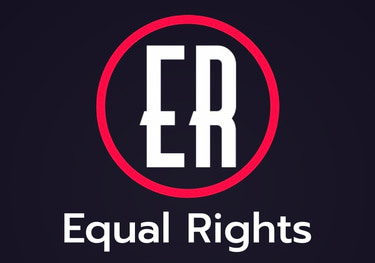Poverty, Social Inequality, and Domestic Abuse:
The Impact on Children
Kylo B
6/22/2024
Poverty, Social Inequality, and Domestic Abuse: The Impact on Children
Children are among the most vulnerable members of society, and the intersection of poverty, social inequality, and domestic abuse can have profound and lasting effects on their lives. These issues are deeply interconnected, creating a cycle that can perpetuate disadvantage and harm across generations.
This article delves into how these factors impact children, exploring the physical, psychological, and developmental consequences, and discussing potential solutions to mitigate these adverse effects.
The Nexus of Poverty and Social Inequality
Poverty and social inequality are often intertwined, creating environments where children are deprived of basic needs such as adequate nutrition, healthcare, education, and safe living conditions.
1. Limited Access to Resources: Children living in poverty are less likely to have access to quality education and healthcare. Poor nutrition can lead to stunted growth and developmental delays, while lack of access to medical care can result in untreated illnesses and chronic health problems. Educational opportunities are often limited, with overcrowded schools, underqualified teachers, and insufficient educational materials.
2. Social Exclusion and Stigmatization: Children from impoverished backgrounds often face social exclusion and stigmatization. They may be ostracized or bullied due to their socioeconomic status, leading to low self-esteem and social withdrawal. This social isolation can impede their ability to form healthy relationships and engage positively with peers and adults.
Domestic Abuse: A Devastating Impact
Domestic abuse, whether physical, emotional, or psychological, profoundly affects children who witness or experience it. The home, ideally a safe haven, becomes a source of fear and trauma.
1. Physical and Emotional Trauma: Children exposed to domestic abuse often suffer from direct physical harm. Even if they are not physically abused, witnessing violence can cause severe emotional and psychological trauma. Symptoms can include anxiety, depression, post-traumatic stress disorder (PTSD), and behavioral issues such as aggression or withdrawal.
2. Developmental Disruptions: Exposure to domestic violence can disrupt a child's cognitive and emotional development. It can impair their ability to concentrate and perform well in school, leading to academic underachievement. The stress and instability in their home environment can hinder their ability to develop healthy coping mechanisms and emotional regulation skills.
The Interplay Between These Factors
The convergence of poverty, social inequality, and domestic abuse creates a toxic environment that exacerbates the negative outcomes for children.
1. Compounded Stress and Anxiety: Children living in poverty-stricken and abusive households face constant stress and anxiety. The lack of financial stability and security, combined with the fear of violence, creates a pervasive sense of insecurity and helplessness. This chronic stress can have lasting effects on their mental and physical health.
2. Cyclical Nature of Disadvantage: The combination of these factors often perpetuates a cycle of disadvantage. Children growing up in such environments are at higher risk of continuing the cycle of poverty and abuse in their own adult lives. Without intervention, they may struggle to break free from these circumstances, leading to intergenerational transmission of poverty and abuse.
Long-term Consequences
The long-term consequences of growing up in poverty, social inequality, and domestic abuse are profound and multifaceted.
1. Health Outcomes: Children from these backgrounds are at higher risk for a range of health issues, including chronic diseases, mental health disorders, and substance abuse. The stress and trauma experienced during childhood can lead to long-term physiological effects, such as weakened immune systems and increased susceptibility to illness.
2. Educational and Economic Prospects: Educational attainment is often compromised, limiting future employment opportunities and economic stability. This can result in a continued cycle of poverty, as low educational attainment often correlates with low-income jobs and economic instability.
3. Social and Behavioral Issues: Social and behavioral problems can persist into adulthood, affecting relationships and social functioning. Individuals who have experienced childhood trauma are more likely to engage in risky behaviors and have difficulty forming healthy, stable relationships.
Breaking the Cycle: Solutions and Interventions
Addressing the impact of poverty, social inequality, and domestic abuse on children requires a multifaceted approach.
1. Comprehensive Support Systems: Implementing comprehensive support systems that provide financial, emotional, and social support to families can help mitigate the effects of poverty and abuse. This includes access to affordable healthcare, quality education, and social services.
2. Early Intervention and Education: Early intervention programs that focus on education and emotional support for children can help them develop resilience and coping skills. Programs that provide parenting support and education can also help break the cycle of abuse.
3. Legal and Policy Reforms: Strengthening legal protections for victims of domestic abuse and implementing policies that address social inequality and poverty are crucial. This includes enforcing laws against domestic violence, ensuring access to social services, and promoting economic policies that reduce poverty and inequality.
4. Community Engagement and Support: Building strong, supportive communities can provide a safety net for vulnerable children. Community-based programs that offer mentorship, after-school activities, and safe spaces can help children develop positive relationships and a sense of belonging.
The impact of poverty, social inequality, and domestic abuse on children is profound and far-reaching. By understanding the complex interplay of these factors and implementing targeted interventions, we can help break the cycle of disadvantage and create a more just and equitable society for future generations. It is essential to recognize the urgency of addressing these issues and to work collectively towards solutions that ensure the well-being and healthy development of all children.
